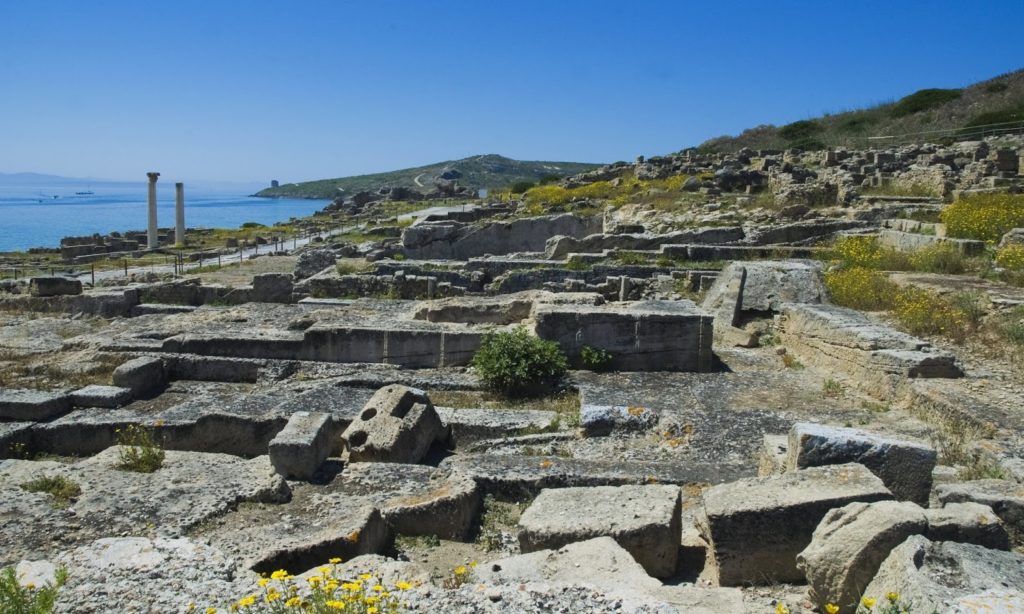Nuragic village, Phoenician emporium, Carthaginian fortress, Roman urbs, Byzantine capital, capital of the Giudicato of Arborea. In Tharros about two thousand years of Sardinian history are told, from the nuraghic age to the middle of the XI century, when, to escape from the Saracen attacks, it was abandoned.
In the Sinis peninsula there are the ruins of the ancient settlement, one of the most important in the Mediterranean, where the excavations bring to light continuous discoveries and ideas for reconstruction. It is a natural amphitheater bounded by the hills of su Muru Mannu and the tower of San Giovanni and the isthmus of the promontory of Capo San Marco.
From the foundation (VIII century a.C.) to the abandonment (1070 d.C.) the city was always inhabited. Today it is an open-air museum. Nuragic testimonies (two towers and a village) prove that the area was inhabited before the Phoenician-Punic era, whose remains are linked to fortifications and funeral rites: two necropolises, near San Marco and the beach of San Giovanni, and the tophet, a cemetery sanctuary for children and infants, where hundreds of cinerary urns have been found.
The Carthaginians added votive stones, the Romans built over an amphitheater, of which little remains. The wealth of the funerary goods did not escape the tombaroli: in 1851 Lord Vernon plundered the treasure of 14 tombs - jewels, precious stones, vases - triggering a gold hunt among the local inhabitants. Part of the booty is in the archaeological museums of Cabras and Cagliari and at the Antiquarium Arboriense of Oristano.




